NYC — MARCH 7, 2019
Human Capital at Umber Ahmad’s Mah-Ze-Dahr
In New York City, James Beard Award semifinalist Umber Ahmad implements a strategic business model to create accessible luxury in her pastries at Mah-Ze-Dahr.
Words by Stef Ferrari
Photos by Noah Fecks
“I shy away from the term ‘lifestyle brand.’”
This is what Umber Ahmad tells me when we’re seated at her sun-soaked bakery in New York’s West Village, in a corner where we’re barely able to carve out enough space for our conversation. A morning crowd is gathering around the pastry counter, many easing into an obvious rapport with the clerk on duty.
“I think that [phrase] has just become so ubiquitous,” she continues. Her French bulldog, Toro, seems to find her own lifestyle pretty comfortable regardless of semantics. She’s at our feet and I’m feeding her “Toro Treats,” which Ahmad now makes and sells for the cravings of her customers’ canines as well. She, her staff, and Miss Toro have become well acquainted with those customers in the course of three years on idyllic Greenwich Avenue, where Mah-Ze-Dahr has become a part of many daily routines.
And although routine is arguably the antithesis of disruption, make no mistake, Ahmad is a disruptor. Her means of doing so doesn’t involve Instagram-bait chunks of cookie dough or technicolor cream-filled doughnuts. Instead, she makes an impression doing her best renditions of classic, iconic pastries: pain au chocolat that practically drip with French butter; scones that crumble into creamy, ethereal bites; brownies that easily satisfy any chocolate-crazed kid, but are sophisticated enough that the James Beard Foundation recognized Ahmad as a semifinalist for Outstanding Baker in 2019. And all of which easily become an integral part of her patrons’ lifestyle.
This is the mystery of Mah-Ze-Dahr—how Ahmad manages to harness both the tradition and the trend. Being a master of such dualities isn’t surprising. Ahmad herself is a study in the intersection between left and right brain; she’s able to interact with the here and now while always leaning a little toward the future. But to understand where Ahmad is going, it helps to know where she’s come from.
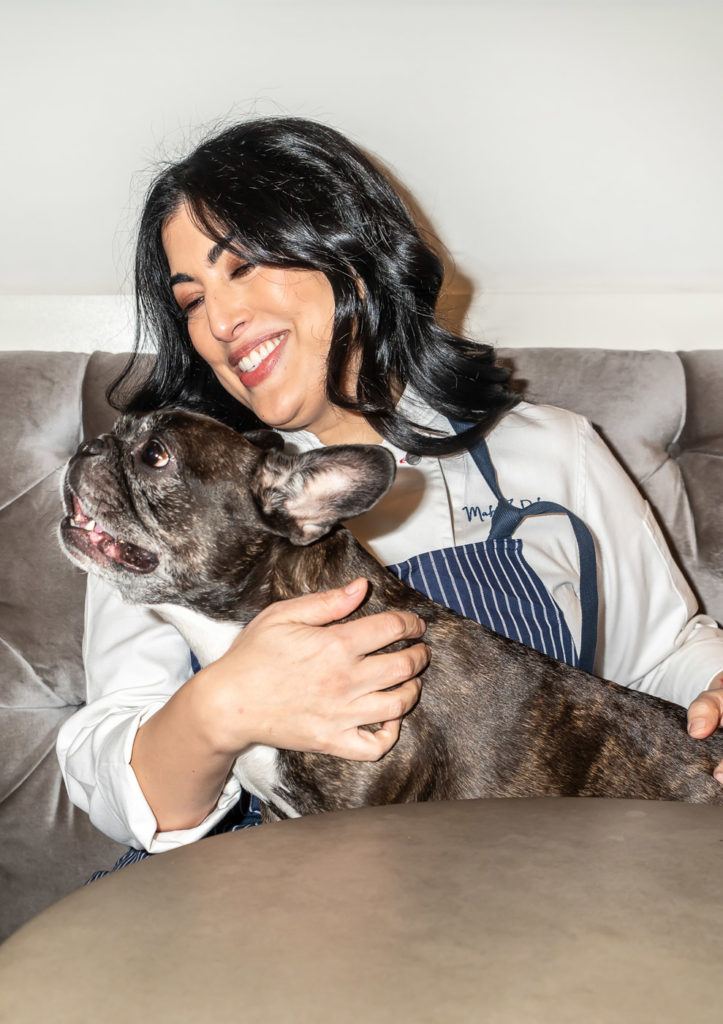

In the Beginning
“We grew up in a very small town with a lot of Norwegians and Polish people,” she says of her Michigan roots. “We were one of two non-blonde families.”
Ahmad is the granddaughter of a Pakistani engineer who harnessed hydroelectric power to further efficiency in farming (the crop, in her family’s case, being what Ahmad refers to as “the best mangoes in the world”). Her parents were intent on making sure she and her sister knew there was more to life than rural Michigan. “My parents were really committed to having us understand that this wasn’t the entire world,” she says. So every summer, the family spent two months in Pakistan with family. The last month, though, was an immersive education in a foreign country, always a different part of the world. “The third month of the summer would be a month in France or Morocco or Monaco or Sweden, and we would learn about the cultures through the food.”
On these adventures, her mother encouraged her children to make the connection between the micro and macro of enjoying food. “My mom would tell us to close our eyes and [would say], ‘Tell me what you taste.’ The idea was removing one of your senses heightens the other sense. So we’d have a bite of chicken with cinnamon in it, and we’d say, ‘This reminds me of Michigan,’ because our nanny would make us oatmeal with cinnamon,” Ahmad tells me. “But we were in Morocco eating pastilla, which is the chicken and the olives and eggs and cinnamon.” Those flavor associations followed her around the world as she built a mental library of places and tastes. “[We’d] have bread in Sweden that has saffron, and that tastes like rice in Spain. And the tea in Pakistan tastes like the bread in Finland because of the cardamom.”
The connectivity, Ahmad says, “Was to teach us that we are all made of the same ingredients; we’re just mixed together in different ways.”
Each new location left its imprint on Ahmad, but she began to wonder about her own mark on the world. “My father is a corneal surgeon, and he literally gave people sight,” she recalls. “What an incredible gift and ability to do that. My parents would always ask us, ‘What will your legacy be? How will the world be better because you’re here?’ And it could be a really small way, or a big way, but it has to be something.”
After completing her undergrad in genetic engineering at MIT, Ahmad returned to the University of Michigan where she earned a masters degree in international health policy and epidemiology. She was compelled by watching what her father was able to do as a surgeon, but wondered how she might have the opportunity to be part of a broad impact.
She began consulting in healthcare systems. “Here’s this pot of money and here’s this population of people.” She explains it was her work to attempt to treat a population’s healthcare needs with that particular pot, which made her curious about that money and its provenance. “Who makes those financial allocations? I understood that if you’re going to effect change it has to be at the root,” she says. So Ahmad followed the trail and returned to school again, this time for her MBA at Wharton, before going on to roles at Morgan Stanley and Goldman Sachs in investment banking.
Okay, I’ll interrupt at this point, because I know you thought you were here for a story about croissants. Don’t worry, we’ll get there. But what might seem a circuitous path is why Ahmad’s contribution to the food world is about more than dreamworthy pastries.
Once on Wall Street, she worked in private equity investing, but realized that. “There were a lot of companies were too small or too nascent to be interesting or appealing to a Goldman Sachs,” she says. So Ahmad left to co-found a firm from which she could help smaller brands achieve their goals, and the work led her to unexpected places.
“I started spending time thinking about where there were pain points in the world,” Ahmad says, identifying that one of those points was food insecurity. “The reality is that the people who need to be fed are not being fed. Where there is arable land and water is actually not where the populations are, so how do we marry those two things together?”
Ahmad began spending more time in the Middle East and “realizing that sixty percent of the population there is under thirty-five, many of whom are obese because of wrong kinds of food choices, and none of whom have arable land and water,” she tells me. She dedicated herself to exploring ways to make that connection. She focused her work on long-term solutions, like helping to build hydroponic farms, and “started understanding what the near-term desires of that population were, and a lot of it was centered around celebrity. They wanted famous brands, they wanted famous chefs.”
After working with several major U.S. companies to determine growth potential overseas, Ahmad did something that really changed the world. She baked a cake.
“Tom Colicchio became a client of ours,” she tells me, explaining her firm was investigating opportunities for his brands outside of the States. After making a chocolate cake for a mutual friends’ birthday, Colicchio approached her. “He said it was the best chocolate cake he’d ever had.” Colicchio being a celebrated chef and she without any formal culinary training, Ahmad was in disbelief. “I was like, ‘You’re Tom Colicchio, that’s ridiculous!’”
That her “amateur” efforts made such an impression is likely evidence of the same dedication and meticulous investigation applied to all her undertakings. “I just started baking for him—everything I knew how to make,” she says. Colicchio was sold. He came back to her and asked what she hoped to do with her food. Her response? “I want to become my own client.” She described wanting to do for herself what she’d done for others—to build a heritage brand. And, as Ahmad remembers, Colicchio said, “Alright, let me help you do that.”
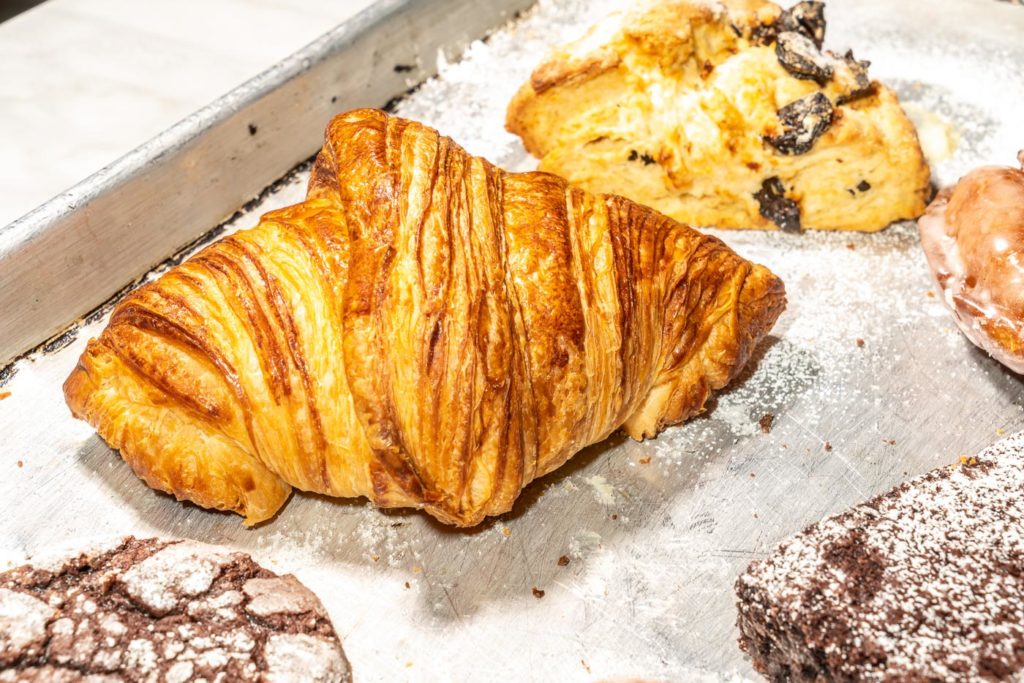

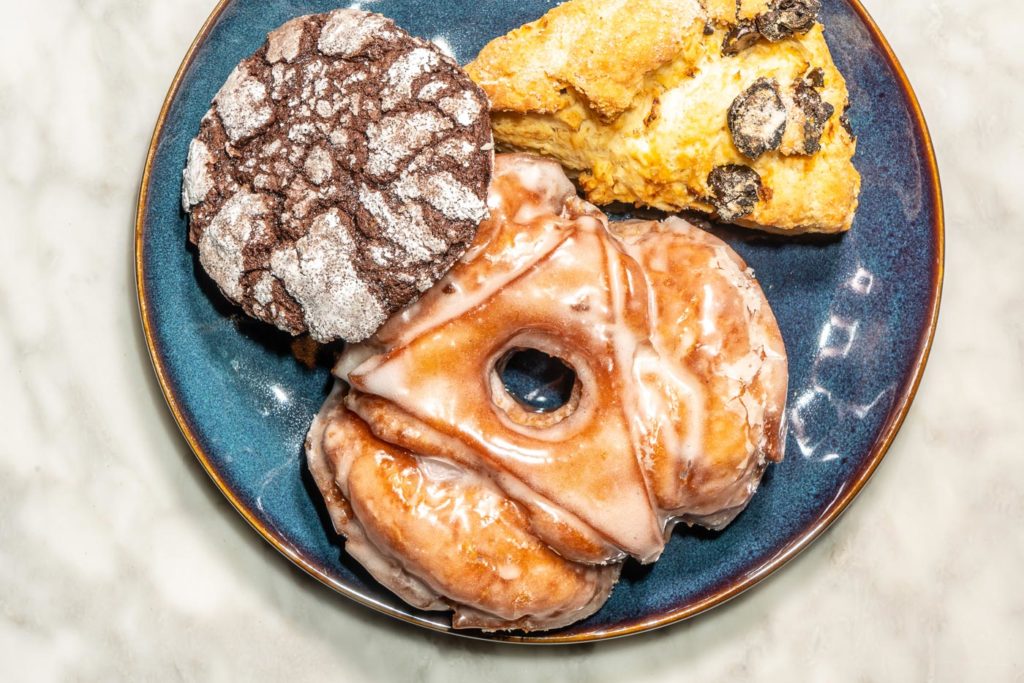

The Business
Today, Mah-Ze-Dahr is recognized as one of the best bakeries in New York City. Ahmad herself has been featured in Time and Forbes, in addition to various food publications like Food & Wine, Zagat and Tasting Table. But much like the way her parents wanted her to see beyond her hometown, Ahmad imagines a more global picture for her company. Her brand may have begun with an unassuming birthday cake, but her vision goes far past the slice of humble pie—maybe even beyond baking altogether.
“It was about understanding that the ability to communicate through food is much bigger and broader than any one brand, any one store. It’s a way to connect a person and an emotion to an outcome,” she says. It may not be surprising, considering she wasn’t coming from a food business background, that she looked to other industries for inspiration.
She references those brands taking an interest in food as well, including Ralph Lauren, Gucci and Prada (who recently acquired the oldest pasticceria in Milan). “You look at a Ralph Lauren ad and think, ‘I want to live there.’ Is it the paint color on the walls? Is it the shirt the boy is wearing? Is it the blanket that’s covering the child? Is it how they smell? It’s all the things,” she says. She was inspired by that holistic approach to building a brand, and the food business seemed like a logical place to start. “There’s this piece of how people want to spend their money and their time, and this focus now on more experiential spending, and less on material spending,” she continues. Millennials, she says, want to share their experiences. “And food fits that from every angle.”
It was with this nontraditional, business-minded query in mind that Ahmad decided to test her own concept. She began with grassroots efforts like asking her investment banker friends to hire her to send client gifts. Then she shifted to a more contemporary approach and built a website from which she could sell and ship her products. It was about answering the question, “How do I get in front of customers who probably could become my customers but know nothing about me?” That brand exposure was priceless, and critical to beta-testing for a physical bakery.
Ahmad pursued partnership opportunities with like-minded brands including Intelligentsia and Jetblue, who had just launched their Mint experience—a premium class service. “When we started with [JetBlue], we were making sixteen passengers worth of pastries per week, and when we finished two-and-a-half years later, we were feeding twenty-two thousand passengers a month.”
The success of the website gave her another important insight: data. “One of the great things about [starting the brand] online was I knew where my customers were,” Ahmad says. “I knew who my customers were; I knew what they wanted to buy and how often they were buying.” She realized the majority of her demographic in New York City lived downtown. “I knew if I was going to be able to service them and broaden the exposure to that population, I had to be where they lived.”
Ahmad’s is no overnight success story; she’s transparent about the steps she took to make her bakery thrive amid a climate in which so many food businesses can’t seem to get traction or staying power even with the best of products. Beyond a seemingly fated encounter with Colicchio, very little was left up to chance when it came to opening Mah-Ze-Dahr.
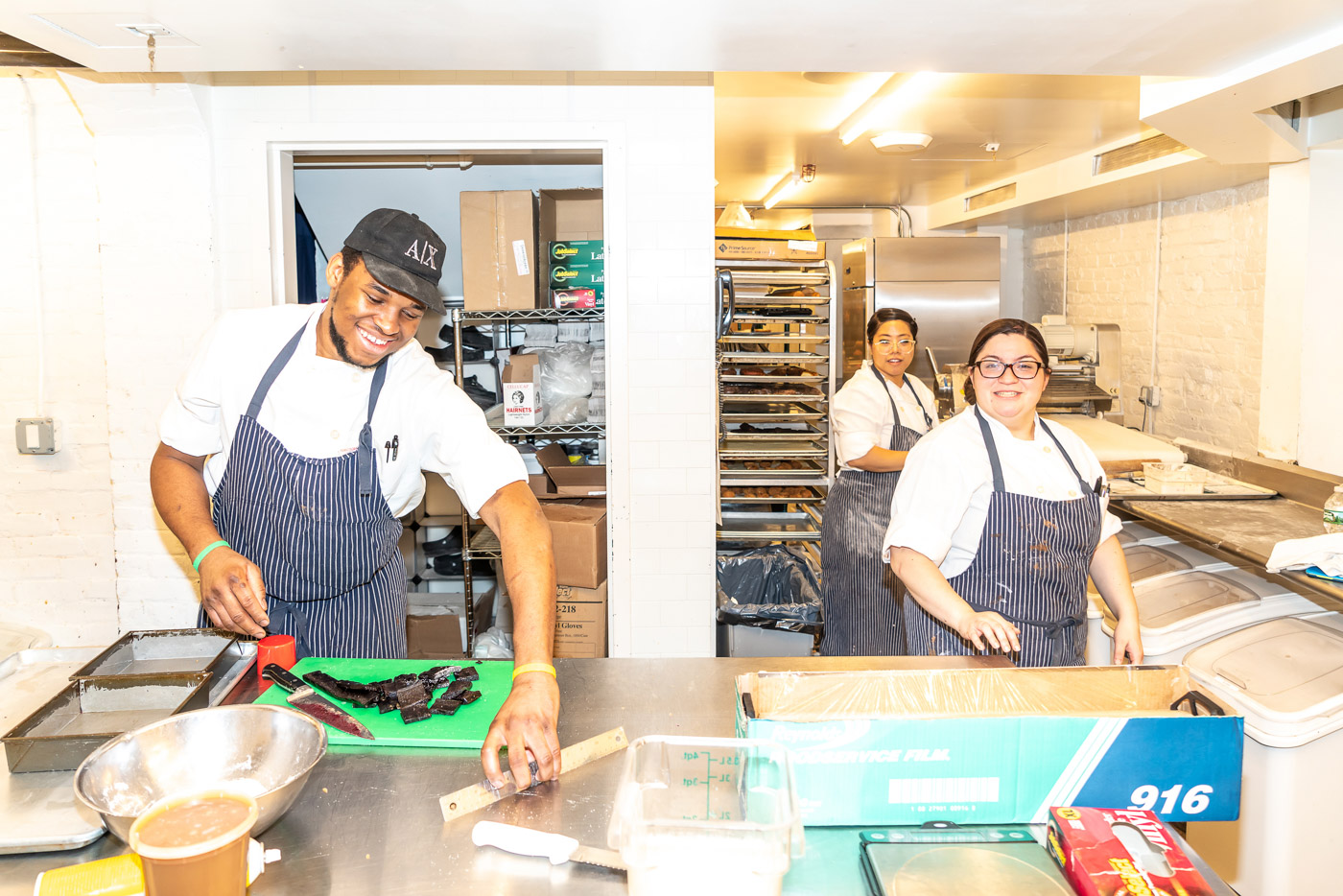
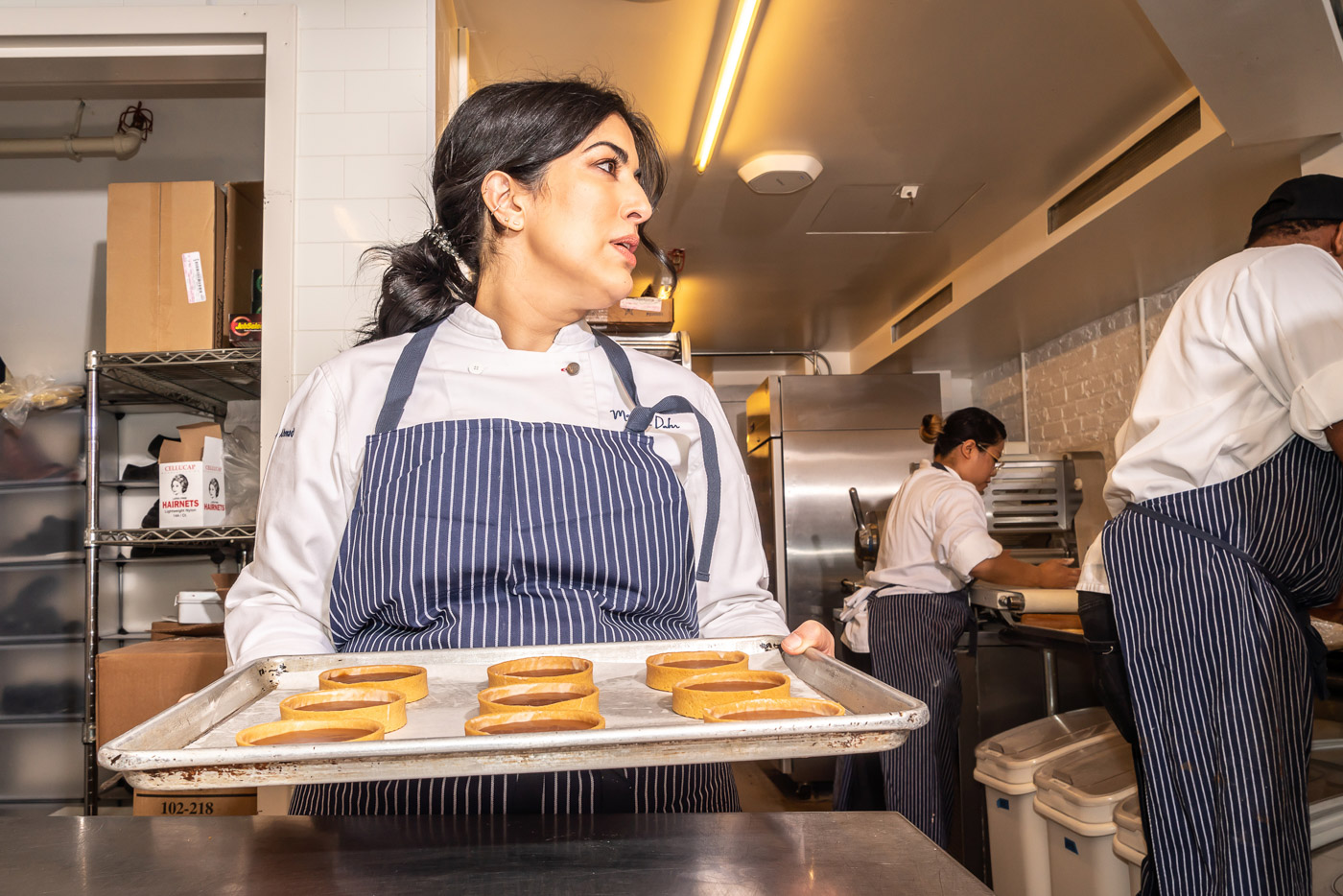
Little Luxuries
It may not be Hermes, but anyone who has gotten a whiff of the croissant at Mah-Ze-Dahr—a study in French imported butter, sourdough fermentation, and meticulous technique—understands this is definitely one of life’s luxuries. As it turns out, luxury is an ideal that translates well to the food world even when not the fine-dining, white tablecloth setting.
“Luxury, up until now, has very much been this aspirational, unattainable phenom,” Ahmad muses. “And that’s not what it is. Luxury is about how you treat yourself. Nourishing doesn’t necessarily mean going to a play or buying a great watch. It can be. But nourishing yourself is the physical process of creating a sense of balance, and that’s what I try to do every day with my food.”
Proving the value of her products—as a relatively affordable luxury—can be more challenging. The economics of running a food business are still fairly misunderstood, and Mah-Ze-Dahr sees its share of customers who balk at the prices. “People come in and say, ‘It seems so expensive. I make cookies at home and it costs me almost nothing,’” she tells me.
The response requires a deeper understanding of what goes into creating a food business beyond ingredients. “I say, ‘I appreciate that, and I’m sure you make great cookies. But you aren’t employing thirty-seven people, you don’t have upwards of $20,000 a month in rent, and then electricity and insurance.’”
Ahmad is also deliberate in how her business is operated on the human resource side. “I also run an ethical business; every one of the people who works with me is offered healthcare, [and I match their] retirement plan. They get paid a living wage; it’s not a minimum wage,” she says. “Everyone has internal progression; I promote from within.” Building sustainability, she says, is of the greatest importance to her model.
Here, we see Ahmad’s upbringing in action—her interest in humanity, and that idea of making a difference. In order to implement and sustain that kind of impact, her approach has been strategic—to think big and grow into it. But bakeries being the humble community cornerstone that they are is not something Ahmad neglects at Mah-Ze-Dahr. In fact, it was a central consideration in the development of her bakery, especially given her own experience as a woman and person of color.
“After the election in 2016, I started to get a lot of questions about whether I’d change the name of the bakery,” she says. Ahmad recalls being asked if she had concerns about running a business that sounded “foreign” or Middle Eastern. “I’m not Middle Eastern—not that there’s anything wrong with that—but I’m Pakistani,” she would respond, pointing out Pakistan’s location in South Asia. It was at once unsettling and motivating to Ahmad. “People feel somewhat emboldened to cast aspersions, which is horrifying to me and makes me want to double down on wanting this to be a place of camaraderie and community and support and respect,” she tells me.
Ahmad recalls the adversity and “otherness” she experienced throughout her life, first in Michigan, then at MIT (“Where for every two women there were eleven men”), and again on Wall Street. She struggled with finding a sense of community. “I craved it, and I always wanted that.” She asked herself, ‘How do I create a sense of community of like-minded people but with different backgrounds, different origins, different colors, races?’”
While many New Yorkers like their local spots to stay small and to remain their own little secret, it’s hard not to get behind Ahmad’s ambitions to grow her brand, and hope she can spread a similar message in future locations, first capturing attention with something like a slice of cake. Small offerings, she’s proven, can make a very big difference.

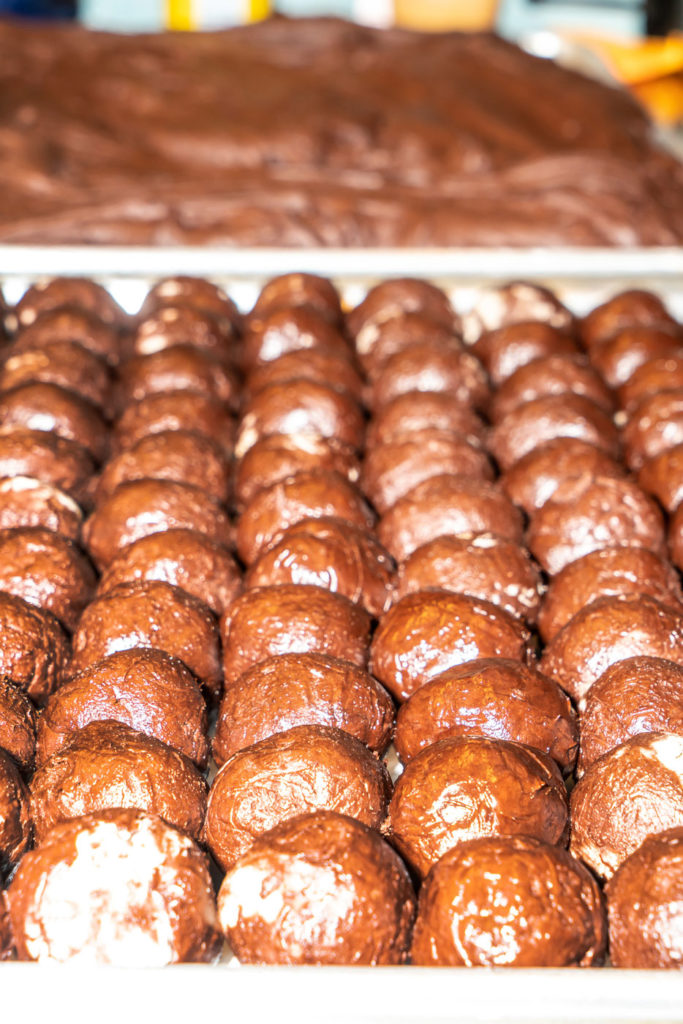
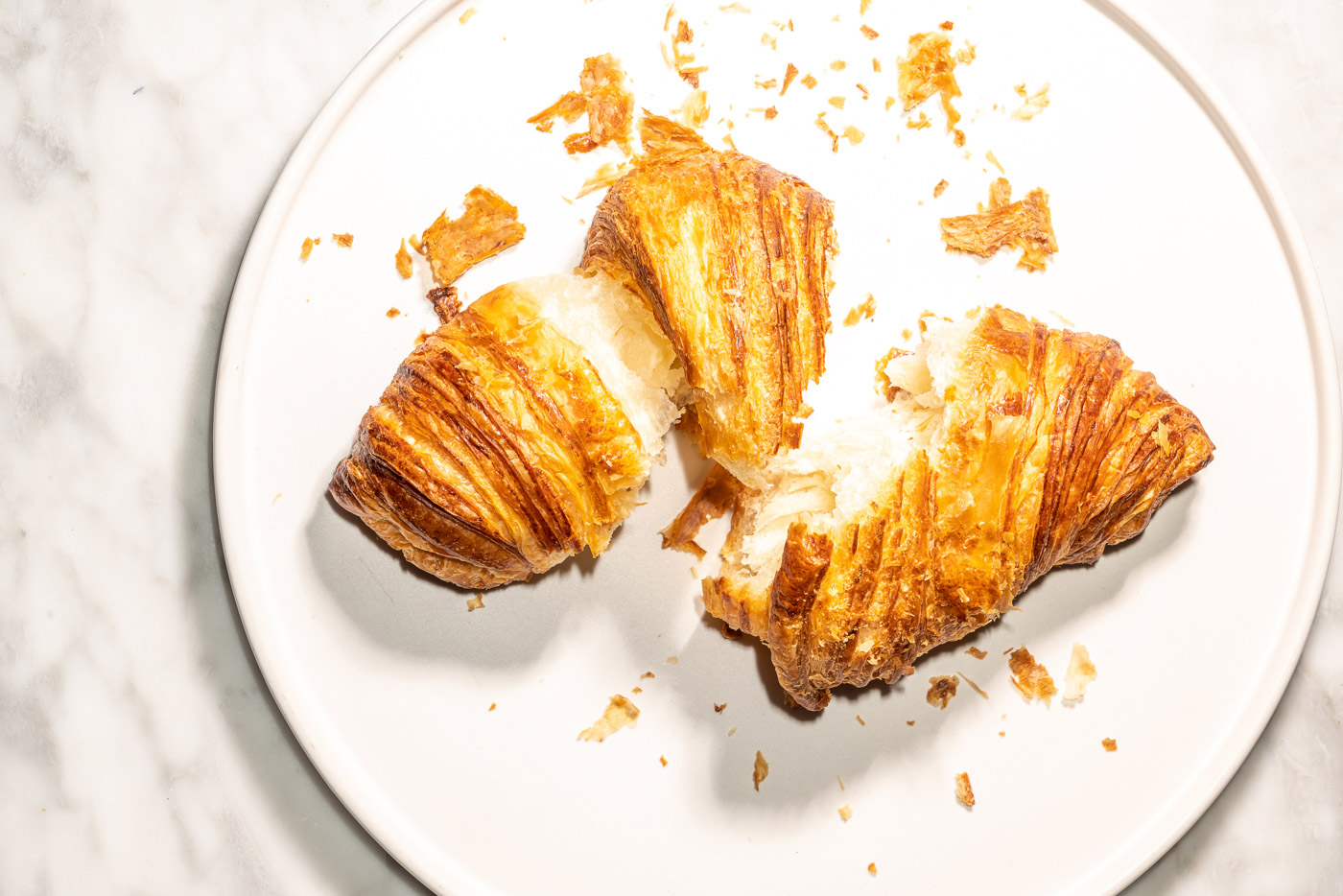
——
Mah-Ze-Dahr is from the Urdu language, and according to Ahmad, is used to “describe the magic or the essence that makes something special. It’s a je ne sais quoi.”
That applies to those little luxuries for now—the textured, ethereal choux pastry, the vanilla cream-filled brioche doughnuts (of which I regularly dream), the silver dollar-sized shortbreads that evaporate on the palate and the appropriately named dark chocolate explosion cookies. But Ahmad believes the future of her brand may bring that certain something to future pursuits yet to be determined. “The brand has a lot of opportunity—more than food,” she says. “For better or worse, it has stemmed out of the experiences in my life, and I like to believe I am not a one-dimensional human being.”
Back in 2014, the Kickstarter campaign Ahmad and Colicchio promoted for the bakery invited readers to join them on “a journey of mystery and desire.” Looking around the shop today, it seems there is no shortage of patrons who will happily be on board to see where Mah-Ze-Dahr will take them next.
The bustling bakery is an intersection of sensibilities: a blend of science and art, beauty and business, romantic notion and technical execution. Ahmad demonstrates there’s room for both the head and the heart, and by embracing all of what makes us human, her work becomes part of a regular routine rather than an occasional indulgence—and dare I say, a lifestyle.






Our comments section is for members only.
Join today to gain exclusive access.